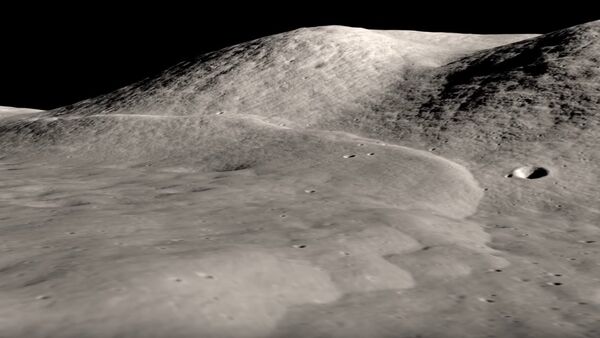A new study by a group of Indian geophysicists has found striking evidence of surface-level moonquakes in the form of dislodged boulders that plunged into lunar craters when the ground beneath them rocked.
That the moon experiences moonquakes is not new information: however, a group of scientists at India’s Council of Scientific & Industrial Research (CSIR), the Indian Space Research Organisation and the Indian Institute of Technology Madras has unearthed (unmooned?) some new evidence, presented in a paper published last month in the journal Geophysical Research Letters.
When Apollo astronauts visited the moon in the late 1960s and early 1970s, they placed several seismometers to monitor the satellite’s geology. While those seismometers found deep shaking inside the moon roughly once every 27 days, which researchers dismissed as stress fractures caused by its orbit of the Earth, they also detected 28 shallow moonquakes between 1969 and 1977.
“The moonquake that occurred at Laue crater on 3 January 1975 is the largest recorded moonquake (MW 4.1),” according to the scientists. “Our analysis of high‐resolution satellite images and topographic data obtained by NASA's Lunar Reconnaissance Orbiter mission aided in the discovery of a set of young lobate scarps near the epicenter and its genetic link to the 1975 moonquake.”
The January 3 shaker triggered “coseismic boulder avalanches on the interior walls of nearby impact craters,” and caused the formation of lobate scarps on the Laue crater, an impact site inside the massive Lorentz basin, a 193-mile-wide impact crater on the far side of the moon.
“Our study indicates that the lobate scarps in Laue crater are seismically active and their seismic activity could be further studied during future landing missions,” the scientists wrote. Lobate scarps are “long, curvilinear structures … interpreted to be tectonic in nature, the result of a thrust fault developed in rocks that are otherwise structurally sound,” according to the Lunar Reconnaissance Orbiter Camera website.
#SpaceExploration Research has found that a strong moonquake in 1975 probably sent boulders tumbling down moon crater walls —Came from a set of small cliffs on the edge of the Lorentz crater basin, just over the northwest limb of the Moon's visible side: https://t.co/vS7YnP0d59 pic.twitter.com/gThv12MA0B
— Karla Segura Ch. (@CRKARLA) August 7, 2019
In other words, the scientists found that the moon’s surface shakes, too, and powerfully enough to affect the lunar landscape.
"Everyone is curious to know the answer for this question: Is the moon currently geologically active? Yes, it is," P. Senthil Kumar, principal scientist at CSIR-National Geophysical Research Institute in Hyderabad, India, and lead author of the study, told Phys.org. "Our finding of three generations of boulder avalanches provided important clues to their episodic origins. It is important to know if moonquakes occur periodically.”
The scientists found further evidence of at least two other quakes at the same site: one roughly 1.6 million years ago, and another only noted to be older than that.
Another study published earlier this year found that as the moon continues to lose heat leftover from its formation 4.6 billion years ago, it is shrinking, forcing its crust to wrinkle like a “raisin.”
"Unlike the flexible skin on a grape, however, the moon's crust is brittle, causing it to break as the interior shrinks,” Thomas Watters, lead author of the paper and senior scientist in the Center for Earth and Planetary Studies at the Smithsonian Institution in Washington, said in a May press release about the discovery. “This breakage results in thrust faults, where one section of crust is pushed up over an adjacent section. These faults resemble small stair-shaped cliffs, or scarps, when seen from the lunar surface; each is roughly tens of yards high and a few miles long."
But the Earth and moon aren’t the only bodies in the solar system that experience quakes, either. The US space agency NASA has been tracking marsquakes on the red planet with its InSight lander, aiming to discern the nature of Mars’ interior.

